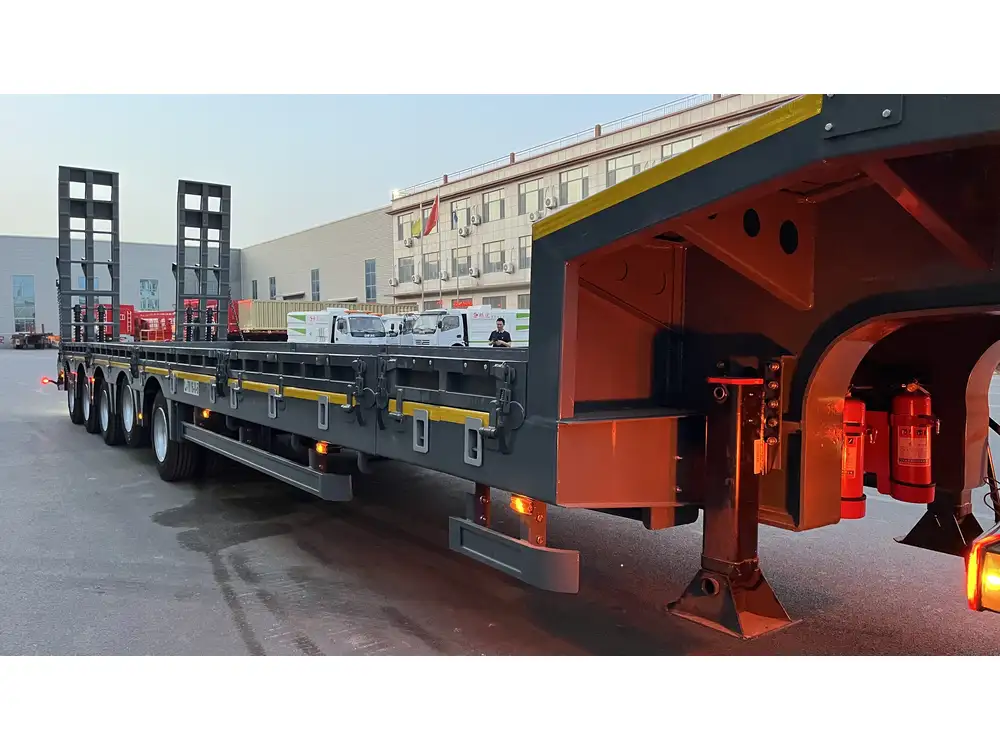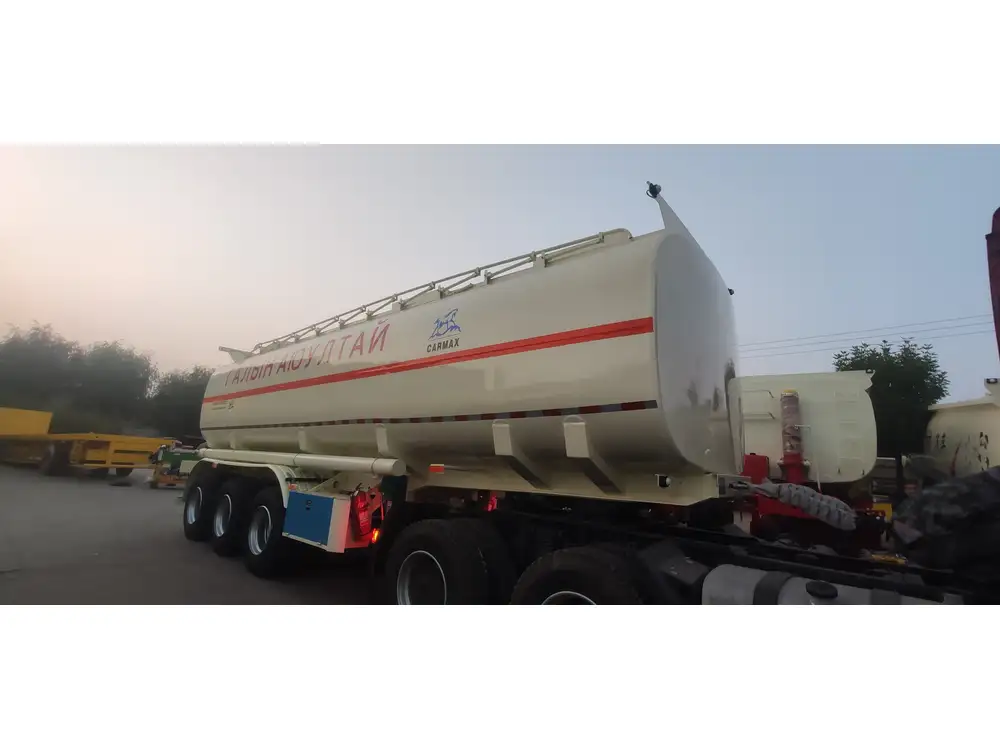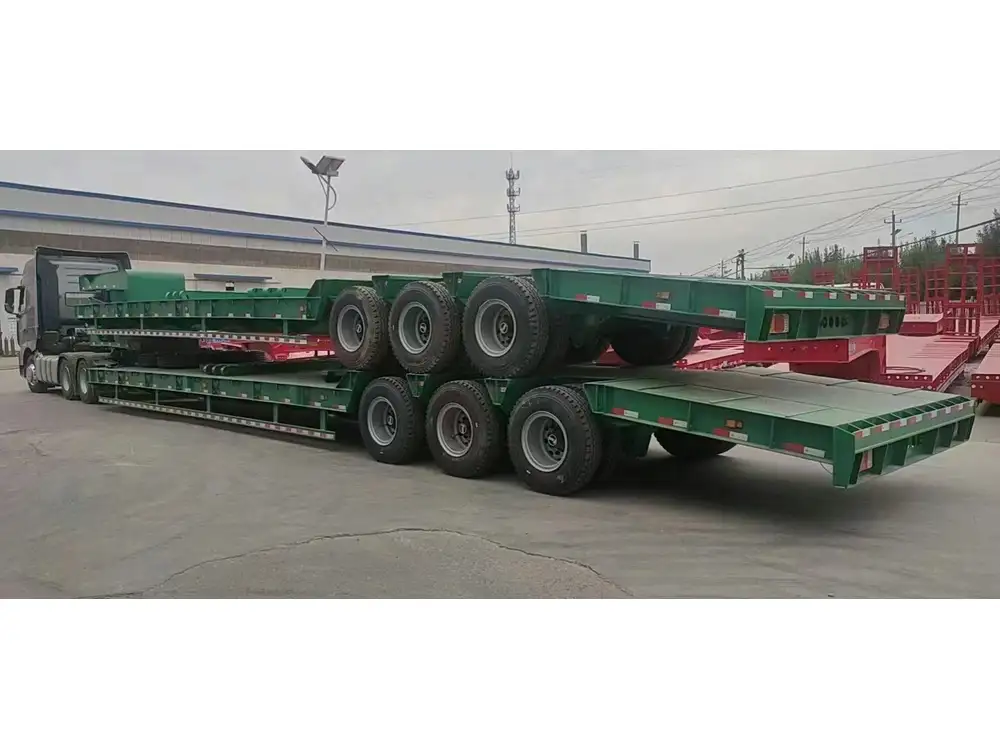Moving a 40-foot container on a trailer involves meticulous planning, thorough preparation, and a keen understanding of logistics. This guide aims to provide you with an in-depth examination of the procedures and best practices to ensure a smooth transportation process. From selecting the right trailer to understanding permits and regulatory compliance, this document serves as a comprehensive resource for manufacturers and haulers alike.
Understanding the Basics of Container Transportation
The Significance of Container Sizes
Before embarking on the process of moving a 40-foot container, it’s crucial to understand common container dimensions:
| Container Type | Length | Width | Height | Weight Limit |
|---|---|---|---|---|
| Standard | 40 ft | 8 ft | 8.5 ft | 67,200 lbs |
| High Cube | 40 ft | 8 ft | 9.5 ft | 67,200 lbs |
Containers are designed for optimized shipping and storage, but they come with strict weight limits. Understanding these constraints will help in choosing the appropriate trailer.

Trailer Selection
Selecting the right trailer is fundamental. There are several types of trailers suitable for transporting a 40-foot container:
Flatbed Trailers
- Pros: Offers versatility in loading; ideal for open cargo.
- Cons: Requires tarping for weather protection.
Container Chassis
- Pros: Designed specifically for containers; offers stability and security.
- Cons: Limited to container transport.
Lowboy Trailers
- Pros: Lower center of gravity, making it ideal for heavier cargos.
- Cons: Not commonly used for standard containers.
Carefully assess the trailer types considering your specific needs, load weight, and route.
Preparing for the Move
Pre-Move Considerations
Route Planning
- Analyze the terrain and route conditions. Ensure the path is suitable for large trailers. Take note of:
- Road restrictions
- Bridge heights and weight limits
- Potential construction zones
- Analyze the terrain and route conditions. Ensure the path is suitable for large trailers. Take note of:
Necessary Permits
- Local and state regulations often require permits for oversized loads. Apply in advance to avoid any delays. Common permits include:
- Over-dimensional permits
- Route-specific permits
- Traffic control permits
- Local and state regulations often require permits for oversized loads. Apply in advance to avoid any delays. Common permits include:
Load Securement
- Ensure that the container is properly secured onto the trailer to prevent movement during transit. Use:
- Straps
- Chains
- Blockades
- Ensure that the container is properly secured onto the trailer to prevent movement during transit. Use:

Safety Measures
Safety should be the number one priority. Keep in line with industry standards such as the Federal Motor Carrier Safety Administration (FMCSA) guidelines:
- Inspect Equipment: Routine checks on the truck, trailer, and container.
- Practice Safe Driving: Adjust driving techniques according to the load weight and trailer type.
- Communicate with Spotters: Utilize ground spotters for vehicle maneuvering in tight areas.
Step-by-Step Process to Move a 40 Feet Container
Step 1: Load the Container onto the Trailer
Positioning the Trailer
- Align the trailer with the container’s door side.
Using a Forklift or Crane
- Lift the container using a forklift or crane capable of handling the weight. Make sure to follow standard protocols for lifting and securing loads.
Placement on Trailer
- Gently lower the container onto the trailer. Center it to maintain balance. Ensure it is resting on the chassis properly.

Step 2: Secure the Container
Utilize Appropriate Straps or Chains
- Secure the container using at least four pairs of straps or chains.
Check for Excess Movement
- After securing, wiggle the container to check for any movement. Adjust tightness as necessary.
Inspect All Securement Points
- Reconfirm that all points of contact are secure and robust enough to withstand travel stress.
Step 3: Transportation
Keeping Communication Open
- Have a communication plan between the driver and the support team. Use radios for instant communication.
Adjusting Speed
- Drive within prescribed speed limits, but also adapt to current road conditions and trailer load stability.
Frequent Stops for Checks
- Take breaks during transit to check load security, tire pressure, and overall vehicle condition.
Step 4: Arrival and Unloading
Site Preparation
- Prepare the unloading site, confirming it’s free of obstacles.
Utilizing Equipment for Offloading
- Use forklifts or cranes just as with the loading process to safely unload the container.
Final Checks
- Once unloaded, inspect the container and trailer for any damage or wear.

Common Issues and Solutions
Issue: Regulatory Compliance
Solution: Stay Informed and Organized Maintain an up-to-date checklist of regulatory requirements for every region you traverse. Being organized can save significant time and resources.
Issue: Weight Discrepancies
Solution: Employ Accurate Weighing Equipment When loading, utilize certified scales to avoid exceeding the weight limits. This promotes safety and compliance, reducing the risk of legal complications.

Issue: Weather Conditions
Solution: Monitor Weather Reports Always assess weather conditions before and during transportation. Plan alternate routes if severe weather is expected.
Issue: Equipment Failure
Solution: Regular Maintenance Checks Implement a routine maintenance schedule to prevent equipment malfunctions. Ensure all staff members conduct visual inspections before each transport.
Conclusion
Transporting a 40-foot container on a trailer entails a blend of strategic planning, awareness of regulatory requirements, adherence to safety protocols, and meticulous execution of loading and unloading procedures. By meticulously following these guidelines, manufacturers and haulers can ensure an effective and smooth transportation experience. Always remain vigilant about changes in regulations and advancements in transportation practices to stay ahead of potential challenges.
This comprehensive approach not only optimizes operational efficiency but also contributes to a more secure and reliable service, reinforcing your reputation in the semi-trailer manufacturing industry.



